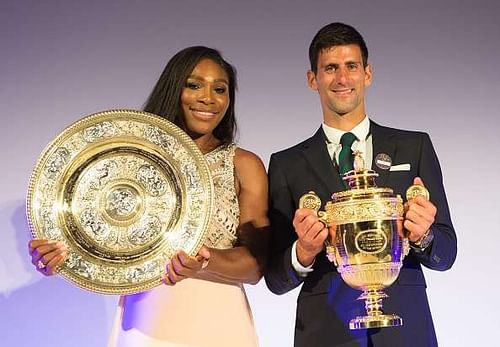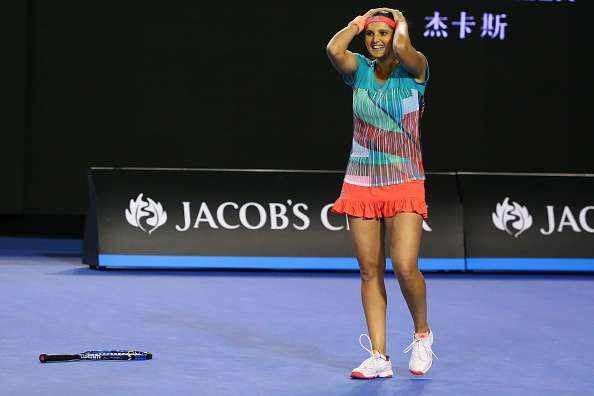
The wage gap in Tennis – Is it fair or does it need to change?
Two of the most talked about issues in the world today is that of feminism and equality. Equality has always been an issue in sports for many years but was kept under the carpet until the recent comments from World Number one Novak Djokovic and former tennis player Ray Moore.
“I think the WTA [Women's Tennis Association] — you know, in my next life when I come back I want to be someone in the WTA because they ride on the coattails of the men,” he said, according to multiple reports. “They don’t make any decisions and they are lucky. They are very, very lucky. If I was a lady player, I’d go down every night on my knees and thank God that Roger Federer and Rafa Nadal were born, because they have carried this sport. They really have.”
-Ray Moore (CEO of Indian Wells tournament that Novak won in March 2016)
The tasteless remarks made media headlines, and this led to questioning the Serb on his opinions about this issue. Djokovic responded saying that “Men should fight for more because the stats are showing that we have much more spectators on the men’s tennis matches”.
Novak is just one of the many male tennis stars who believe that they deserve a higher wage than their female counterparts on the basis that they bring in more spectators and revenue. What we can infer from their statements is that both Djokovic and Moore’s thoughts are driven by the largely capitalist world that we live in.
Also Read: Is equal pay justified in the case of men's and women's football?
In the 21st century, sport has been increasingly involved and dependent on business, marketing, and management firms. This has led to the exchange of ideas and values that the two industries share.
Sport and its governing bodies have realized that with the support of the business industry, the potential returns can be massive. Perhaps Djokovic’s way of looking at this issue could be justified by this unification of Sport and business.
However, world number one Serena Williams has a different opinion on the issue.
“These sports have a lot of work to do. And I really hope that I can be helpful on that journey because I do believe that women deserve the same pay. We work just as hard as men do. I’ve been working, playing tennis, since I was three years old. And to be paid less just because of my sex — it doesn’t seem fair. Will I have to explain to my daughter that her brother is going to make more money doing the exact same job because he’s a man? If they both played sports since they were three years old, they both worked just as hard, but because he’s a boy, they’re going to give him more money? Like, how am I going to explain that to her?”
-Williams speaking on the legal battle for equal pay for work that the U.S.Women's National Soccer Team faced.
The 22-time Grand Slam winner, on the other hand, argues that when both genders put in the same amount of effort, why must one gender be paid higher?
Conversely, some male tennis stars have also argued that the fact that men play five sets as opposed to women playing three is another reason to be paid more. There are two ways to look at this.

The first – it may be an assumption on the part of the male players that women are not ready to switch to a five-set format. In fact, the WTA, along with many Women’s tennis players have pushed for a five-set format in the Grand Slams. The International Tennis Federation (ITF) have only denied them the opportunity to do so, stating ‘biological differences’ as the reason.
In fact, Wimbledon Champion Andy Murray has gone on record to support the claim saying, “it’s not like women cannot play five sets”.
The second perspective on this could be that, even if women do not play five sets, this need not be the basis for which they are paid.
12-time Grand Slam winner, Billie Jean King, who was a major driving force behind the Equal Prize money in the US Open once said – “When you pay an entertainer, you don’t pay them hourly. You pay them for their performance”. Perhaps the number of sets and duration of the game is not even a basis by which we address the issue.
The fact that there is an issue about the wage gap is clear. But the way in which it could be tackled still isn’t. Most of the world is divided on this issue and some cannot decide which side to pick. Perhaps the following discussion could aid in making a choice.
A majority of today’s world has accepted the capitalist way of life and many economists have deemed it to possibly be one of the most successful forms of human social cooperation. If we are to accept the capitalist way of life into the sport, we must learn to live with the fact that some athletes may be the reason behind a major part of the revenue while some others, despite being just as good or even better, could miss out.
The best example for the same would be Maria Sharapova making more money than Williams (Although Williams would beat Sharapova consistently in Grand Slams, Sharapova would be paid more on the whole because the business industry perceived her as the more marketable athlete of the two – probably based on looks).
Even if we reach a point where women are paid as much as their male counterparts, top stars like Rafael Nadal, Roger Federer, and Novak Djokovic would still make a considerably higher amount of money through their endorsements.
For example – World number one in doubles, Sania Mirza, is one of the most marketable athletes in the world. This comes from the fact that she has 1.2 billion Indians backing her. That is over 15% of the world population who are going to be backing her against pretty much any other athlete in the world.
There is no biased way in which one athlete is considered more marketable, but it's just a consequence of what the majority of the world prefers. This is why some athletes end up being more marketable and hence earn more, thanks to capitalism.
It certainly is a very important issue in the long run for both Tennis and Sports in general. Which side of the argument you want to pick is a matter of choice but there are several arguments that support the claim made by Serena.

